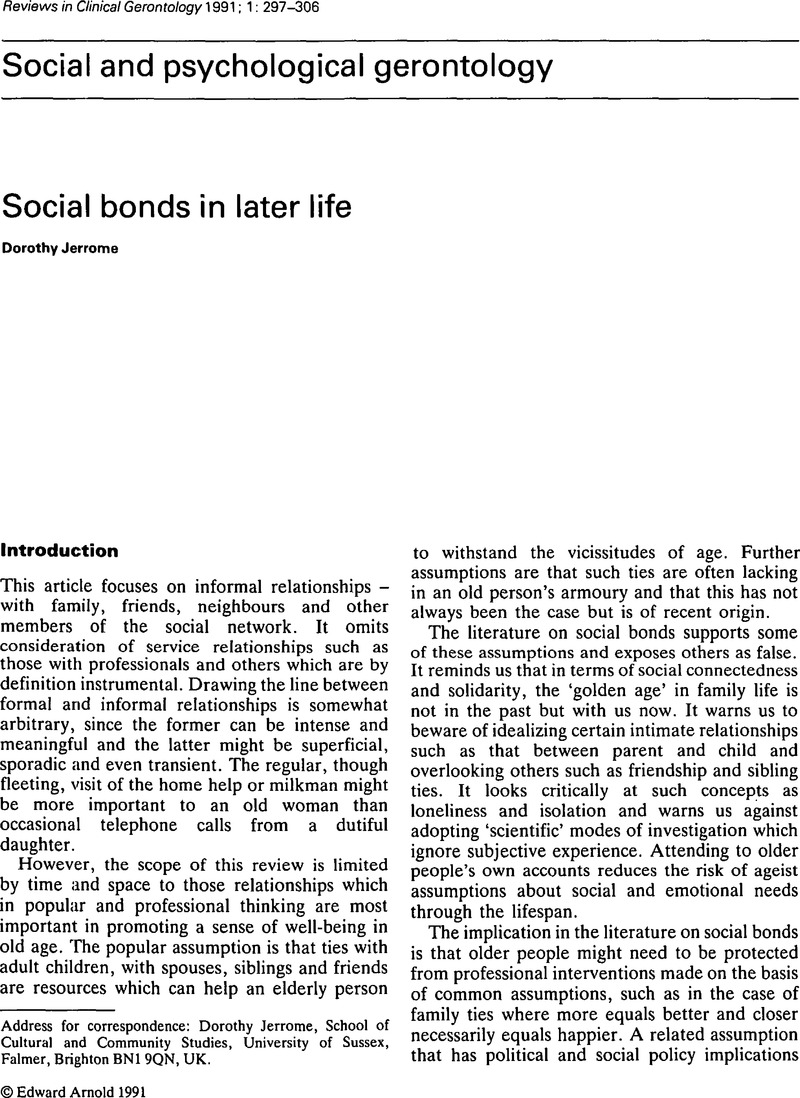Crossref Citations
This article has been cited by the following publications. This list is generated based on data provided by Crossref.
Martin, M.
2000.
Aspekte der Entwicklung im mittleren und höheren Lebensalter.
p.
98.
Fung, Helene H.
Carstensen, Laura L.
and
Lang, Frieder R.
2001.
Age-Related Patterns in Social Networks among European Americans and African Americans: Implications for Socioemotional Selectivity across the Life Span.
The International Journal of Aging and Human Development,
Vol. 52,
Issue. 3,
p.
185.





